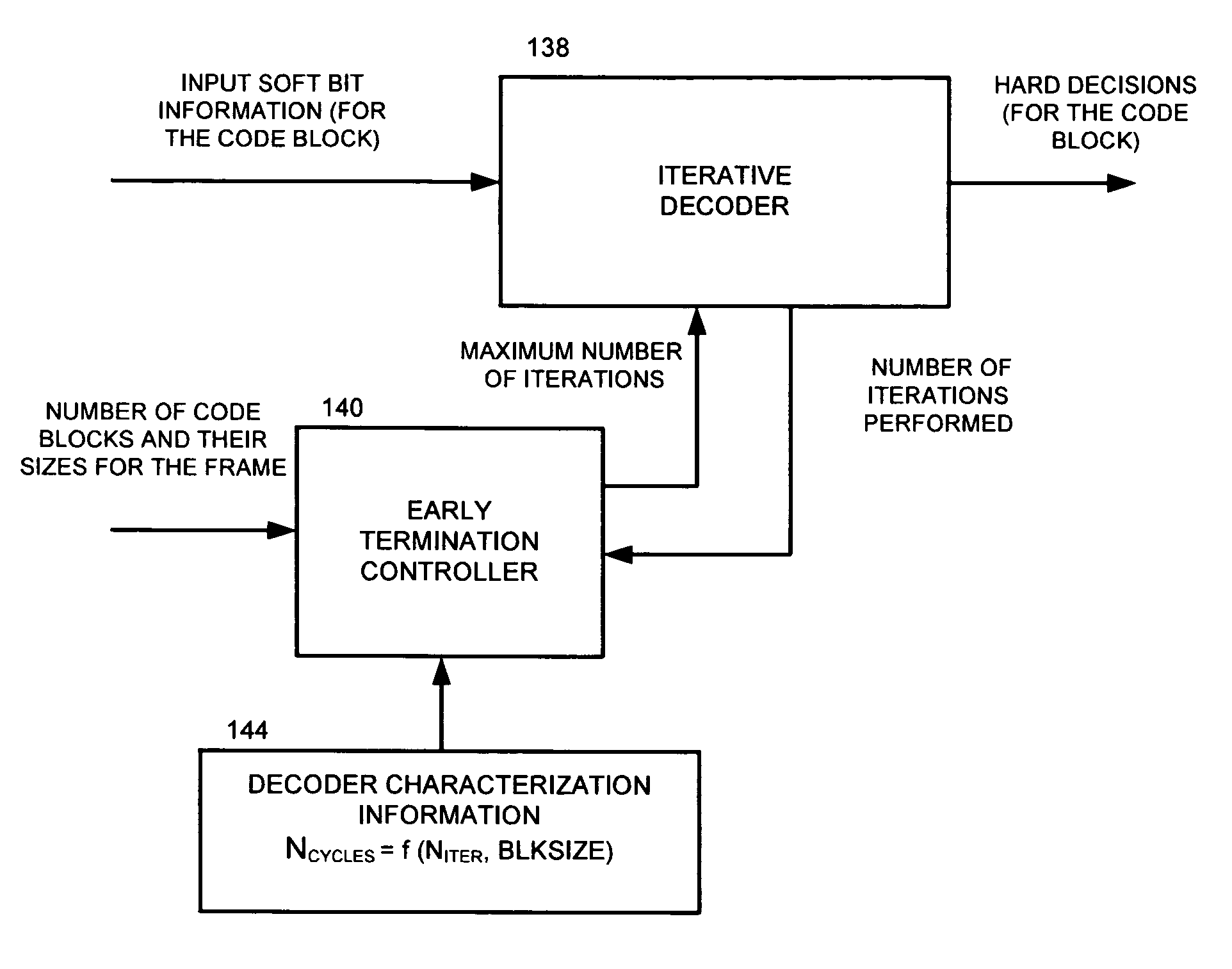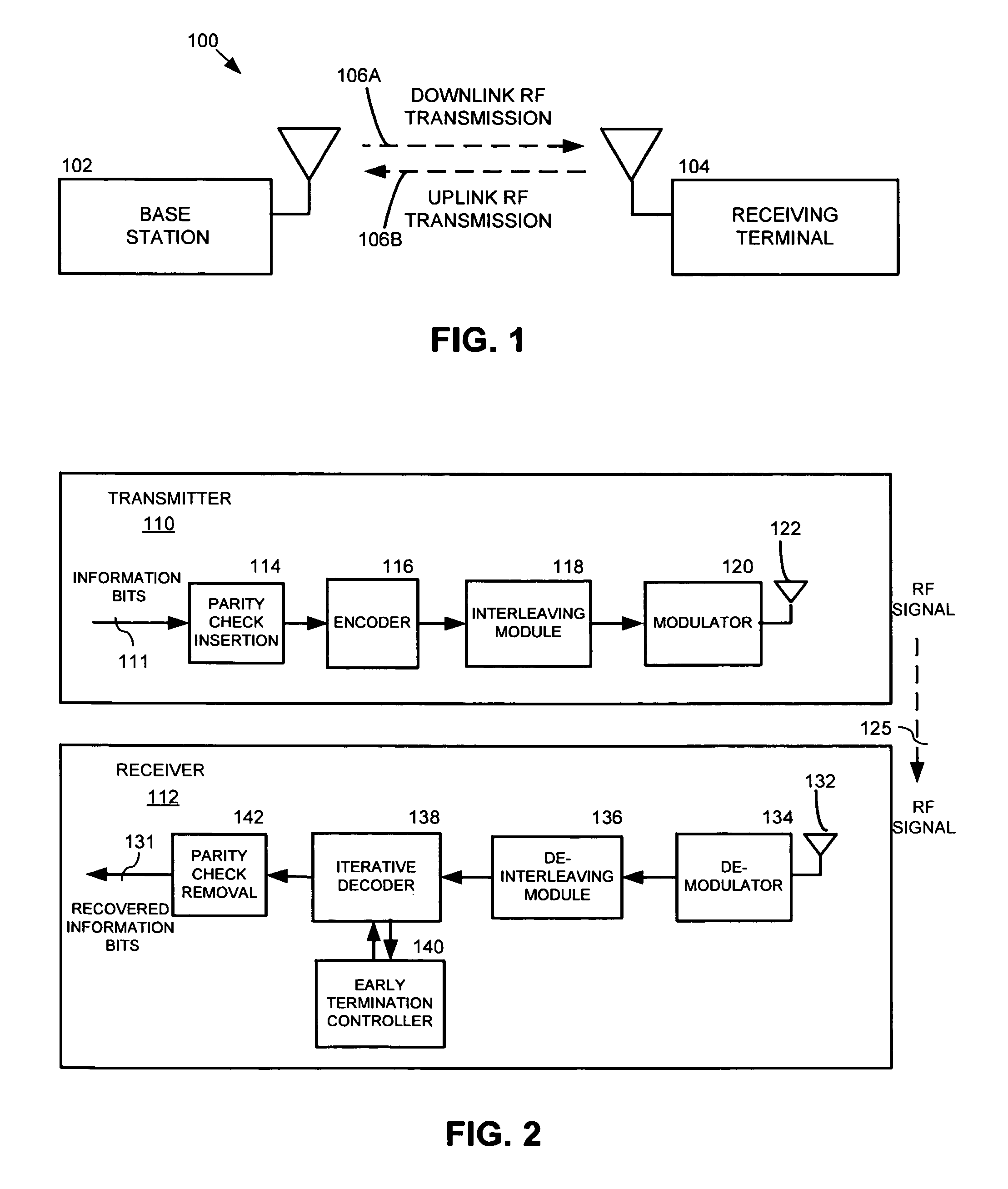Early termination controller for iterative FEC decoders and method therefor
a technology of early termination controller and fec decoder, which is applied in the field of communication networks, can solve the problems of fec decoders having difficulty recovering a series of errors in adjacent bits, inherently prone to noise and interference in the transmission of digital data, and introducing errors into the transmitted data, so as to maximize the processing capacity of decoders and improve the block error rate performance of receivers. , the effect of optimizing the block error rate performance of decod
- Summary
- Abstract
- Description
- Claims
- Application Information
AI Technical Summary
Benefits of technology
Problems solved by technology
Method used
Image
Examples
Embodiment Construction
[0025]It is to be understood that both the preceding summary and the following detailed description are exemplary and explanatory and are intended to provide further explanation of the invention as claimed. Neither the summary nor the description that follows is intended to define or limit the scope of the invention to the particular features mentioned in the summary or in the description. The present invention provides a method, system and apparatus for improving the block error rate of a receiver by dynamically controlling the maximum number of iterations of an iterative forward error correction decoder that implements early termination.
[0026]As an initial matter, reference may be made herein to “convergence” and “converged”. As used herein, convergence is a state that indicates a high level of confidence that the decoded bits represent the bits that were transmitted. The state of convergence, i.e., converged or not converged, is determined by one or more criteria. Measurements ar...
PUM
 Login to View More
Login to View More Abstract
Description
Claims
Application Information
 Login to View More
Login to View More - R&D
- Intellectual Property
- Life Sciences
- Materials
- Tech Scout
- Unparalleled Data Quality
- Higher Quality Content
- 60% Fewer Hallucinations
Browse by: Latest US Patents, China's latest patents, Technical Efficacy Thesaurus, Application Domain, Technology Topic, Popular Technical Reports.
© 2025 PatSnap. All rights reserved.Legal|Privacy policy|Modern Slavery Act Transparency Statement|Sitemap|About US| Contact US: help@patsnap.com



